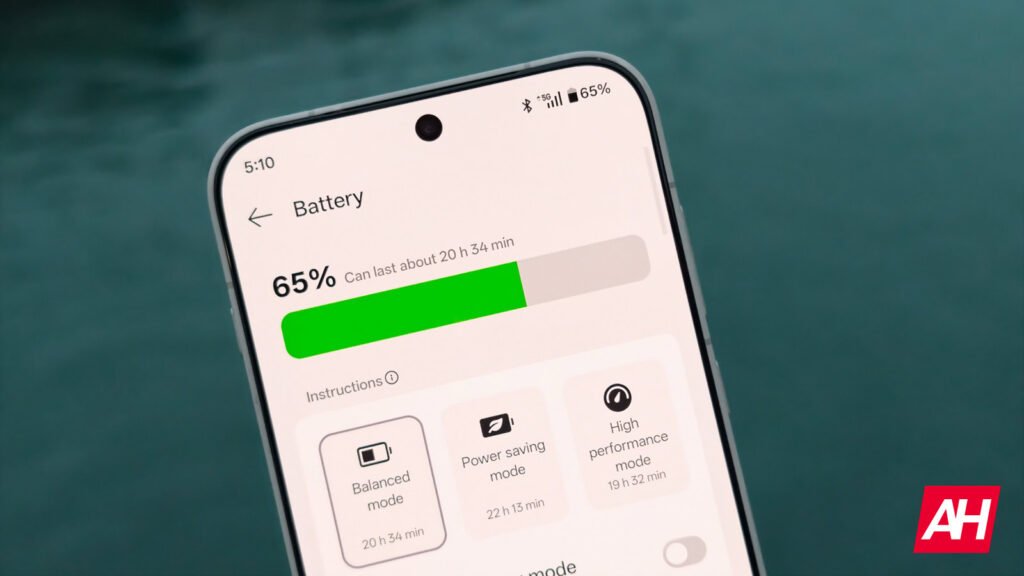

The OnePlus 15 was just announced with a massive 7,300mAh capacity battery. That’s about 21% larger than the OnePlus 13 which was already pretty massive at 6,000mAh. This is made possible from Silicon-Carbon, a technology that a lot of the Chinese OEMs – HONOR, Huawei, Xiaomi, OPPO, realme, vivo, and OnePlus – are all using and allowing them to include more power in a physically smaller battery.
But, a larger battery doesn’t always mean insane battery life. Except with the OnePlus 15, it does.
So I’ve been using this phone for almost a month now, it’s been my daily driver since the end of October (after my OPPO Find X9 Pro review went live). And it’s been quite impressive. Now, I did come from the Find X9 Pro which also has a very large 7,500mAh capacity battery with an even more efficient chipset – the MediaTek Dimensity 9500 – so I was a little bit used to this kind of battery, but still nice to have.
Last weekend, I took the phone off the charger on Friday night, and it lasted all the way through until Sunday night, with over 10 hours of screen on time with both days combined. This included lots of usage on X, Reddit, YouTube, TikTok and even ESPNBet which typically drains batteries in my experience. This also included a mix of WiFi and 5G, and it kept going. It truly is a battery champ. Now it might not beat out the OPPO Find X9 Pro, but for those of us in North America, it’s the best option.
Most days, I was using less than 50% of the battery, and that included playing multiple hours of MLBB at 120fps and over 50% brightness. That is rather incredible. Even after playing for 3 hours, I did not even feel the phone getting warm. This really shows that OnePlus‘ cooling solution is working.
You can check out more about this device in my OnePlus 15 review which was also published today.
When its time to charge, 100% takes less than an hour
Over the past few weeks, I’ve charged this phone from nearly dead to 100% a few times, an each time it was under an hour to get a full charge. And that means a full charge, not simply when it shows 100%. That’s thanks to the 80W charger that is still included in the box. I was usually getting around 40 minutes for a full charge, which is only about 2 minutes slower than the OnePlus 13, despite a 21% larger battery.
This is the case because it is able to keep a higher wattage for longer. Still, it doesn’t sit at 80W for very long, in fact the majority of the charging cycle will be at 40W.
And if you don’t want to use the SuperVOOC charger that’s in the box, or don’t want to buy a second one to use, USB-C PD got a massive upgrade too. Now USB-C PD charging speeds are sitting at 36W. Still a tad behind the Galaxy S25 Ultra, but a massive upgrade from the 18W on OnePlus 13.
So use this phone for two days, then get a full charge in under an hour, what’s not to like?
Will Silicon-Carbon batteries last?
There’s been a lot of talk about how Silicon-Carbon batteries won’t last as long as lithium-ion batteries (what most phones have used for decades). And that doesn’t seem to be true. In fact, OnePlus is saying you’ll still have 80% capacity after 4 years of charging. The battery can also work in very cold temperatures, as low as -20 degrees Celsius.
Obviously, I have not had this phone long enough to see if those claims are true, about it maintaining 80% health after 4 years of use. But we have had older silicon-carbon battery smartphones for about that same time, and we haven’t noticed a huge difference compared to lithium-ion.
Even with an 80% battery on this huge 7,300mAh capacity battery, that means you’d still have a 5,840mAh battery left. That is still larger than the Samsung Galaxy S25 Ultra battery, which is also $400 more.

When will we see the bigger players add Silicon-Carbon?
Obviously, the big three (at least here in the US) have yet to adopt Silicon-Carbon, and its a mystery as to why. Samsung could have used it in the Galaxy S25 Edge and really improved battery life. But we all know that Samsung is still having PTSD from the Galaxy Note 7, almost a decade ago. I do know that, Samsung is, however, working on this technology. It is being tested, now when that comes to a product you can buy, who knows.
As for Google, they seem to think consumers don’t want silicon-carbon batteries. Which couldn’t be further from the truth. Would you say no to a 20+% larger battery in the same thickness phone? I mean, the Pixel 10 Pro XL is actually larger than the OnePlus 15, with only a 5,200mAh capacity battery, while the OnePlus 15 is about 0.4mm thinner with a whopping 40% larger battery.
And then there’s Apple. I wouldn’t expect to see Apple take on silicon-carbon for probably another decade. I’d love to be wrong, but this is the type of technology that they would love to be last with. And surprisingly, Motorola hasn’t been using silicon-carbon yet either.
The post I Couldn’t Kill the OnePlus 15’s Battery — Believe Me, I Tried appeared first on Android Headlines.













